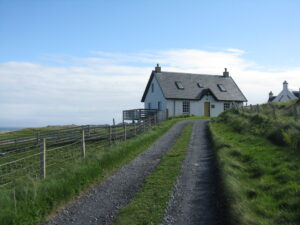You know the obvious warning signs of a leak—dripping taps and damp carpets—but subtler clues often slip under your radar.
In this post, you’ll learn how to read the whispers of moisture before they turn into expensive shout-outs.
If you’d like a deeper dive into professional remediation techniques, the practical resources at Water Damage Specialist break them down clearly.
Let’s start sharpening your detective skills together, room by room, today.
Detect Hidden Wall Dampness
Walls rarely complain aloud, so noticing subtle moisture clues becomes a detective game. Equip yourself with keen eyes, ears, and a systematic plan before the damage snowballs.
Tap and Listen
Gently knock across drywall, noting any unexpectedly dull thuds. A muffled sound often points to saturated insulation or soggy sheet-rock quietly losing structural integrity.
Follow the Paint
Look for blistering, bubbling, or hairline cracks spreading like veins. These defects signal trapped water vapor struggling to escape, especially near bathrooms and exterior corners.
Infrared Camera Sweep
Rent or borrow an entry-level thermal camera. Cooler blue patches amid warm walls highlight evaporative cooling, effectively mapping out concealed moisture trails behind paint.
Probe with a Pin Meter
Insert the prongs at several heights, recording readings. Anything consistently above ten percent in conditioned space warrants immediate investigation and likely professional remediation.
Track Trouble Over Time
Mark suspicious areas with painter’s tape, date them, and photograph weekly. Progressive darkening or spreading confirms an active leak instead of a historic, resolved event.
Examine Suspicious Floor Changes
Footsteps tell stories. When hardwood suddenly groans or laminate feels springy, the subfloor may be soaking up water from leaks, spills, or rising groundwater below.
- Cupped boards: Edges curl higher than centers because planks absorb moisture unevenly, forcing the sides upward and leaving a valley through every joint.
- Squeaks linger: Occasional squeaking happens, yet continued noise after seasonal shifts suggests swollen joists rubbing hardware every time weight passes overhead.
- Soft laminate spots: Spongy sections indicate the fiberboard core has expanded, often from dishwashers, ice makers, or pet bowl splashes left unnoticed.
- Tiles loosening: Grout cracks and tiles rock when adhesive fails after prolonged dampness beneath, permitting additional water to infiltrate unhindered.
- Unusual staining: Dark blotches or white mineral rings on bare concrete reveal chronic seepage rising through slab capillaries, inviting mold colonies.
Document every anomaly, then trace plumbing lines nearby. Isolate appliances, inspect crawl spaces, and deploy fans promptly to inhibit mold before repairs commence.
Check Windows For Condensation
Mist on interior glass resembles harmless morning dew, yet persistent droplets indicate high indoor humidity, inadequate ventilation, or failed window seals pushing moisture inward.
Morning Versus Evening Test
Wipe panes dry at dawn, then monitor throughout the day. Condensation returning after sunrise implicates indoor activities, not cool nighttime temperatures alone.
Seal Inspection
Run a lit incense stick around frames. Watch the smoke; inward pulls reveal negative pressure drawing moist air into wall cavities through worn gaskets.
HVAC Balance Check
Verify supply and return vents deliver equal airflow in rooms with foggy windows. Imbalanced systems starve spaces of dehumidified air, fostering glass sweat.
Glazing Failure Signs
Double-pane units showing fog between panes have lost argon gas. Replacement becomes the only cure since internal moisture cannot be wiped away.
Assess Ceilings For Sagging
Nothing ruins décor faster than a drooping ceiling. Gravity amplifies every ounce of trapped water, so early detection saves drywall, insulation, and valuables below.
- Visual waves: Stand at room corners and sight along the plane. Even shallow undulations warn that gypsum boards are absorbing water and stretching screws.
- Dark rings: Brown or yellow halos spread outward as wet drywall dries at edges, betraying intermittent roof or bathroom leaks directly above.
- Nail pops: Fasteners protrude when swollen joists push drywall downward, leaving circular blemishes that worsen as moisture persists.
- Texture shedding: Popcorn finish falling like snowflakes suggests adhesive failure from dampness, often following attic condensation or ice damming.
- Sound changes: Tap lightly with a broom handle; a soggy panel emits a dull clunk whereas dry gypsum rings crisply under knuckle pressure.
Upon confirmation, puncture a weep hole using a screwdriver to drain trapped water safely into a bucket, preventing catastrophic collapse while waiting for repairs.
Track Unexpected Utility Spikes
A mystery jump in water or electricity bills frequently signals hidden leaks. Analyzing consumption patterns offers a stealthy yet powerful method to uncover moisture sources.
Meter Isolation Test
Turn off all fixtures, then observe the water meter. Movement during inactivity implies plumbing leaks inside walls or under slabs wasting gallons unnoticed.
Appliance Audit
Compare energy ratings to actual usage in your monitoring app. Constant operation of dehumidifiers or sump pumps can mask ongoing moisture infiltration issues.
Seasonal Comparison
Review utility statements year over year. Significant deviations outside temperature-related expectations point to emerging problems requiring prompt troubleshooting.
Digital Leak Detectors
Install smart sensors on supply lines. Immediate alerts via phone allow swift action, cutting both water loss and consequential structural damage costs.
Sniff Out Musty Odors
The human nose remains one of the cheapest diagnostic tools. Earthy, stale scents usually precede visible mold, meaning action now can prevent health complaints.
- Room-to-room walk: Move slowly, inhaling at floor, waist, and ceiling heights. Noting odor gradients helps triangulate concealed moisture pockets within cavities.
- Closet check: Shut yourself inside small spaces for thirty seconds. A sudden damp aroma often betrays poor ventilation meeting stored fabrics.
- HVAC sniff test: Stand near supply vents when the system starts. Moldy blasts suggest contaminated coils or wet duct insulation harboring spores.
- Carpet crawl: Press your hand onto suspect carpet, then smell fingertips. Wet under-padding may release a sour scent long before discoloration appears.
- Baseline outside: Step outdoors between rooms to reset olfactory senses, ensuring gradual adaptation does not dull perception of interior smells.
After locating the stink zone, deploy a dehumidifier, clean with antimicrobial solution, and correct the moisture source to keep odors from rebounding later.
Look For Discoloration Stains
Stains act like timestamps, revealing where moisture has traveled and how frequently it visits. Cataloging their color, size, and location supplies valuable forensic evidence.
Fresh Versus Old
Bright, darker edges around a wet spot indicate active saturation, whereas faded outlines suggest historical leaks that might already be resolved.
Material Matters
Rust streaks under ductwork point to condensation, while greenish efflorescence on masonry signals mineral-laden groundwater wicking upward through porous blocks.
Pattern Recognition
Linear stains under floors above bathrooms often align with joists, guiding you toward specific pipe runs rather than random roof entry points.
Photographic Log
Snap pictures with date stamps, then compare monthly. Growth or darkening merits deeper investigation, possibly escalating to professional moisture mapping services.
Confirm Moisture With Tools
No matter how sharp the senses, instruments provide undeniable proof. Employ affordable gadgets to quantify suspicions and document moisture levels before contractors arrive.
Non-Invasive Moisture Meter
Press the flat sensor against drywall to obtain instant relative readings. Compare suspect zones with known dry areas for accurate interpretation of numeric values.
Thermo-Hygrometer
This device records temperature and relative humidity together. Maintaining indoor humidity below sixty percent curbs mold growth and condensation risks effectively.
Borescope Camera
Drill a small hole, insert the flexible lens, and inspect cavity interiors. Visual confirmation of wet insulation ends all debate about hidden leaks.
Data Logger Strategy
Leave loggers in attics or crawlspaces for a week. Download trends to reveal nightly humidity spikes or roof leaks correlating with specific rain events.
Final Moisture Check
Stay alert to subtle moisture clues; timely action prevents expensive structural repairs.
If doubts persist after your inspection, arrange professional assessment—experts at water damage restoration can verify issues and guide remediation.
Document findings, tackle leaks promptly, and monitor humidity to safeguard health, belongings, and property value long-term from deterioration.

